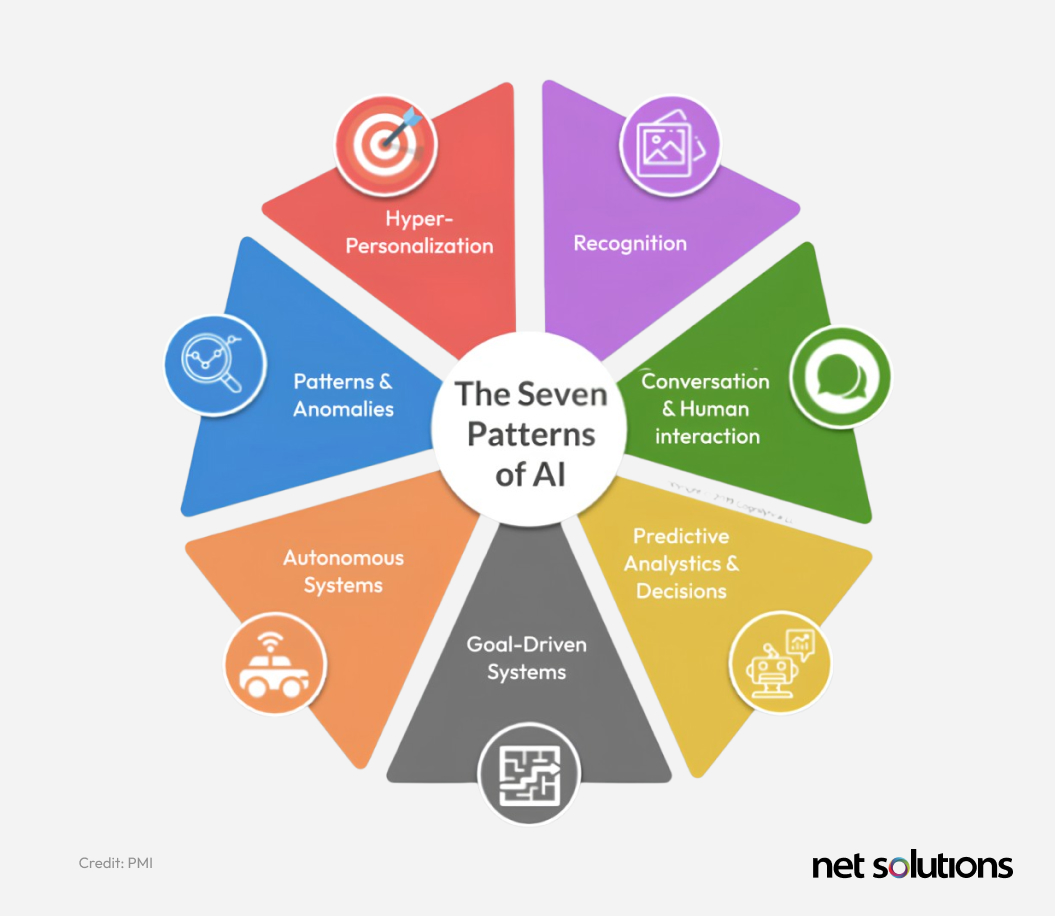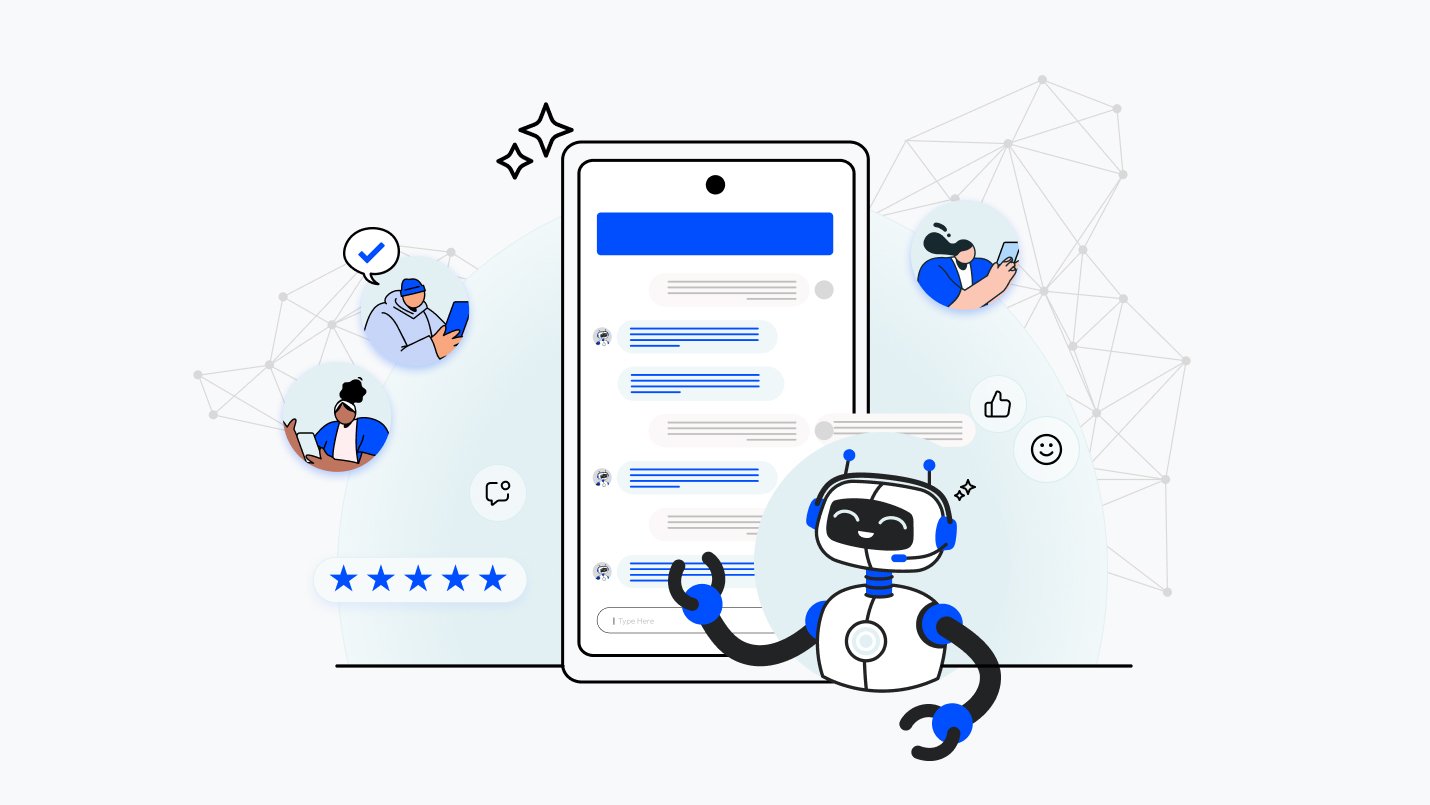Building a successful product means more than launching features. It’s about ensuring users not only show up but keep coming back. The real challenge lies in embedding engagement and retention into the product experience from the start, and using AI to do it intelligently and responsibly.
In this post, we present highlights from a conversation between Joseph Jude (JJ), Chief Technology Officer at Net Solutions, and Karthik Gunasekaran, VP of AI and Software Products at PMI. Drawing on Karthik’s experience at Udemy, PMI, and other global platforms, they explore how GenAI is helping teams create sticky, personalized, and purpose-driven product journeys.
Think Beyond the MVP
JJ: Should product teams start thinking about engagement at the MVP stage, or wait until growth?
Karthik: Engagement and retention only matter once you’ve nailed the product-market fit. That should be your first checkpoint. Ask yourself: Are we solving a real user problem? If yes, how deeply are we solving it? Only then does it make sense to measure engagement. Without this clarity, any focus on metrics is premature.
Defining Meaningful Engagement
Not all engagement is equal. Some users might log in frequently without taking any meaningful action. Karthik shared an example where users repeatedly opened an app due to accidental ad clicks from Instagram. The metrics looked healthy, but the engagement was hollow.
Instead, product teams should differentiate between quantitative engagement (logins, visits) and qualitative engagement (meaningful actions, problem-solving, value exchange). Focus on behavior that signals intent and satisfaction.
Gamification Meets AI
Gamification has always been a powerful engagement tool. From Duolingo to LinkedIn, apps use streaks, leaderboards, and progress bars to nudge users toward actions. But now, AI is taking gamification to the next level.
Karthik: With AI, gamification becomes hyper-personalized. Instead of a one-size-fits-all approach, users get tailored rewards, custom nudges, and dynamic challenges based on their behavior. But there’s a catch. If misused, this can lead to unhealthy behaviors and mental fatigue. Responsible AI practices are essential.
Responsible gamification should drive qualitative outcomes like learning, improvement, or habit formation. Metrics alone aren’t enough. The goal should be to create value, not addiction.
"Gamification has always been a brain hack — now, with GenAI, it’s becoming hyper-personalized. But without responsibility, we risk trading real value for vanity metrics and mental fatigue."
— Karthik Gunasekaran, VP of AI and Software Products at PMI
Retention Is an Ecosystem
JJ and Karthik explored retention beyond the app interface. Lifecycle marketing, subscription nudges, personalized emails, and push notifications all form part of an integrated user experience.
Think of Amazon. While the Kindle itself wasn’t a huge revenue driver, it led users to purchase more Audible books and subscribe to Prime. Similarly, retention can be driven through lifecycle emails, timely push notifications, and subscription nudges. Retention isn’t limited to what happens inside the app. Some of the most effective retention strategies happen outside it.
“The product is just one touchpoint. Retention is an orchestrated effort across the lifecycle.”
— Joseph Jude, CTO at Net Solutions
Karthik noted how personalized subscription models turned one-time purchases into predictable, recurring revenue streams.
Karthik: Amazon’s shift from one-time purchases to recurring subscriptions is a masterclass. They used data to identify repeat buying patterns and nudged users toward auto-replenishment models. It’s a perfect example of converting engagement into long-term retention.
Connect the Silos with a Customer Data Cube
Users interact with your brand across different channels and platforms. But when data lives in silos, teams miss out on building a unified customer experience.
Karthik: The solution is a “customer data cube” — a multi-dimensional view that connects user behavior across different products, devices, and timelines. This not only reduces acquisition costs but allows for personalized experiences at scale. Whether it’s EdTech or eCommerce, the idea is the same: track, understand, and serve users across their journey.
“A customer data cube lets you stitch fragmented experiences into a unified story. It’s not just about better personalization — it’s about unlocking exponential value from every touchpoint.” — Karthik Gunasekaran, VP of AI and Software Products at PMI
— Karthik Gunasekaran, VP of AI and Software Products at PMI
By combining behavioral data across different stages, products, or devices, teams can tailor more relevant experiences and reduce acquisition costs.
Use a Framework: The 7 Patterns of AI
To apply AI meaningfully, Karthik recommends thinking in terms of these 7 patterns:
- Hyper-personalization
- Recognition systems
- Conversational interfaces
- Predictive analytics
- Goal-driven systems
- Autonomous systems
- Pattern and anomaly detection

Use these as a starting point for design sprints. For example, ask where predictive analytics can improve decision-making, or where anomaly detection can prevent drop-offs.
From Prompts to Agents
While ChatGPT and other LLMs are helpful for idea generation, Karthik suggests moving toward agentic workflows. These are AI systems that proactively execute tasks, not just respond to questions.
One example is PMI Infinity, a tool that project professionals use to turn scattered notes into project charters, risk logs, and stakeholder reports. These agents follow predefined frameworks and help users accelerate their work without compromising quality.
Globalization, Language, and Personalization
If you’re building a product for a global audience, GenAI can help you localize not just the language but the experience.
Karthik: At Udemy, we translated millions of hours of content into 26 languages using machine translation and glossaries. But it wasn’t just about language — onboarding flows and user behavior vary across cultures. Some users have intrinsic motivation; others need external rewards. You have to tailor your UX accordingly.
Don’t Build AI Features for the Sake of It
AI can be powerful, but it’s not always the right solution.
Karthik: Start with a clear problem statement. Don’t add AI just to check a box. If you’re building a chatbot or recommendation engine, make sure it solves a real problem and delivers measurable ROI. GenAI isn’t cheap — every token costs money. Make sure there’s business value behind every AI-driven feature.
Key Takeaways
- Start with Product-Market Fit: Before diving into engagement strategies or feature design, ensure you’re solving a real and relevant user problem. Without product-market fit, no level of optimization can save your product. It is the foundation for sustainable growth and retention.
- Avoid Vanity Metrics: Metrics like logins or page views may look impressive, but they don’t always reflect true user value. Focus instead on behavior that signals depth—actions like completing a task, solving a problem, or returning organically. Qualitative engagement is what really matters.
- Use Gamification Responsibly: Gamification can drive action, but it should never manipulate. Use it to reinforce positive user habits like progress, learning, or mastery. With AI, you can personalize gamified experiences, but always stay grounded in ethical, user-centric design.
- Design for the Full User Lifecycle: Retention doesn’t stop at the first click or even within the app. Think holistically—from onboarding to renewal and re-engagement. Use AI-driven touchpoints like lifecycle emails, notifications, and reminders to guide users through their full journey.
- Unify User Data Across Silos: Users don’t see your org chart—they see one brand. Use a customer data cube approach to connect behaviors across channels, devices, and products. This unified view enables better personalization and lowers acquisition and support costs over time.
- Apply the 7 Patterns of AI: Don’t treat AI as a monolith. Use the seven design patterns—like predictive analytics, hyper-personalization, and anomaly detection—to guide your ideation. They help identify specific, valuable applications of AI tailored to your product context.
- Adopt Agentic AI: Move beyond chatbots and passive LLM use. Agentic AI can take proactive actions—drafting reports, analyzing risks, or suggesting roadmaps. These systems reduce manual overhead and scale your team’s productivity without sacrificing control.
- Build Global, Personalized Experiences: A global product needs more than language translation. Use GenAI to understand cultural behavior, motivation types, and regional UX needs. Personalizing onboarding and engagement flows by market helps drive relevance and retention across geographies.
- Measure ROI of AI Features: Not every feature needs AI, and not every AI feature delivers ROI. Assess whether it improves engagement, conversion, or retention in measurable ways. GenAI is powerful, but it’s also costly—every token should earn its place in the product.
JJ: Karthik, thank you for this insightful conversation. It’s clear that while GenAI opens new doors, success still starts with understanding the user and solving the right problem.
Karthik: Absolutely. AI is a powerful co-pilot, but the journey must be led by product thinkers who stay grounded in real-world needs.
Why This Webinar Matters
Whether you’re a product leader, technologist, or growth strategist, this webinar offers:
- Real-world examples of AI in product workflows
- A strategic framework to apply AI responsibly
- Insight into how to localize global products using GenAI
- A reminder that user understanding comes before technical implementation
For anyone building or scaling products in today’s AI-driven environment, these insights offer not just inspiration, but practical guidance.
"AI is a powerful co-pilot, but the journey must be led by product thinkers who stay grounded in real-world needs."
— Karthik Gunasekaran, VP of AI and Software Products at PMI
Don’t just build features. Build understanding. Then let AI scale the value.
Catch the full webinar recording to go deeper into these concepts and explore how product leaders are navigating the intersection of AI, personalization, and responsible innovation.



